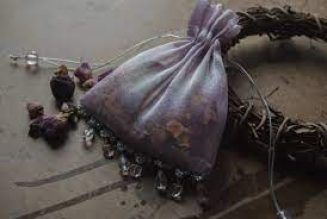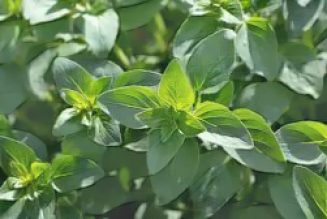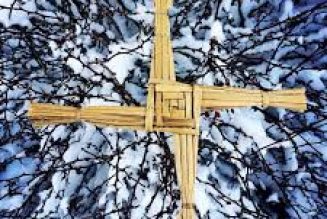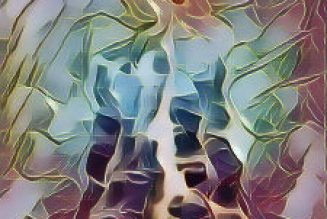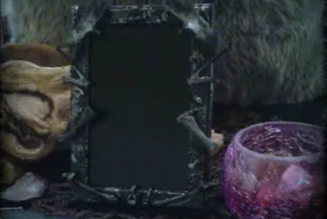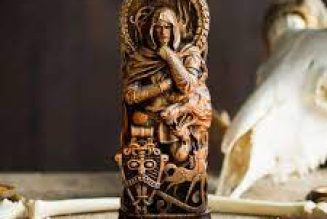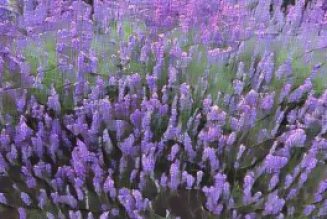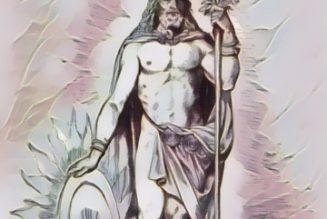Many Traditional Crafters have an interesting relationship with dragons.
Some see them as archetypes, some as being similar to the Gods, and some see them as living mythical beasts, in a very literal way.
It is certainly true that myths and legends involving dragons are central to many of the traditional cultures from which British Witchcraft derives.
In Sumerian and Babylonian mythology we have Tiamet,
the Mother of Dragons, and even in the Ancient Egyptian Mysteries we can find the dragon tucked away,
take a good look at the figure of Ptah found in the tomb of Tutankhamun, and you will see the markings of feathered wings wrapped around His mummiform body.
Ptah, the Great Architect, and one of the oldest gods in the Egyptian pantheon, is a dragon.
But for us in Briar Rose, the dragon is a very personal thing, because we see drakes to a certain extent as “all of the above”, but most importantly, we see the drake as part of our own make-up.
Just as Orion Foxwood teaches that we have three selves, the Dream Walker, Surface Walker and Star Walker, so in our kind of crafting we work with three aspects of self, the Drake, the Initiate and the Crown.
In other Traditions these also appear, though they may have different names, such as the Fetch-Beast, the Magician and the Star-Body, or ShadowSelf, Self and Star-Self.
For us, the Drake is the Underworld component of our being, the Shadow form from which we gain our power.
So awakening the Dragon is an important part of our development, and a key part of our rite of initiation.
However, there is a caveat, because the Drake needs to be reined in by the Crown or Higher Self, otherwise it is out of control, and will ride roughshod over the Initiate self.
It is much like the relationship between Set and Nephthys in the Egyptian Mysteries — Set is, among other things, the chaotic yet potent power of the desert storm, wild and destructive.
But Nephthys provides the control and contact for his chaos,
giving form to his force so that the power is tamed and becomes her power of dissolution,
the side of nature that involves breaking down things to their basic building blocks through erosion, decay, and rotting,
so that those components can be recycled and incorporated in new growth, new life.
So the key when working with drakes is to find the balance point,
much like finding the fulcrum point of the Compass in order to work magic…
only the Drake is the engine that powers the magic, and the Compass is the tool we use, guided by our Higher Self or Crown, to direct it.
We use the term “riding the dragon” both for the process of balancing this relationship, and also for the exercise we use to learn and practice it.
The exercise of riding the dragon is similar in some aspects to a martial arts exercise, as it involves directing energy through posture. Start by standing with your feet shoulder-width apart.
Bend your knees to lower your center of gravity, and curve your spine, so it is a little like sitting in an imaginary chair or saddle.
You should lift your heels off the ground slightly, and allow your ankles and knees to flex slightly.
This results in a gentle bobbing motion, which should be matched to your breathing.
Try to curve your back a little more, so the upper part is also curved.
Let your head drop forward and down, and then look up, curving the neck.
Finally, hold your arms and hands out before you, though they should be curved as well, as if you are holding a large invisible beach ball in front of you.
This is the basic rider position.
Now reach down with your senses, feeling for the dark pulsing energy that “bobs” in time to your own motion.
This is your Drake.
Draw it up until you feel almost as if your feet will leave the floor, and be aware of the Drake flexing in time with you between your thighs.
At this point things will start to get warm, and you will feel spontaneous movements ripple through your spine and neck.
This is where you need to find the balance point, which allows the energy to move where you want it, without it getting away from you.
It is a bit like riding a unicycle.
As long as there is balance, you will find that gentler controlled movement is easy and flows well, and the whole thing feels like an extension of yourself —
but lose that point of balance and it will quickly get away from you, and suddenly you are being forced to move, dragged in the direction it wants to go, because you have lost control.














